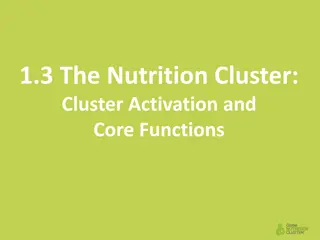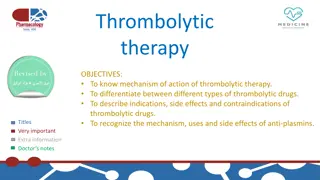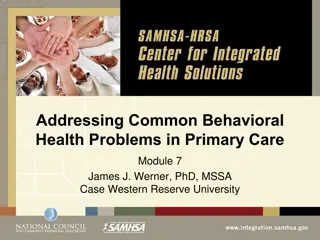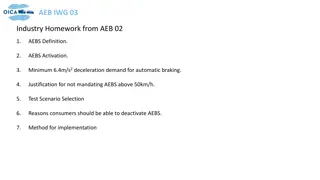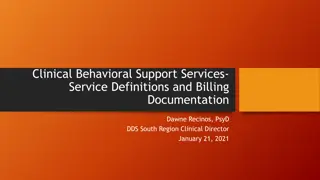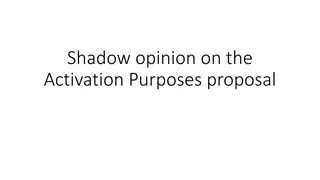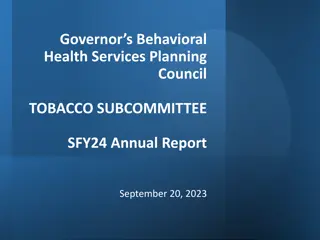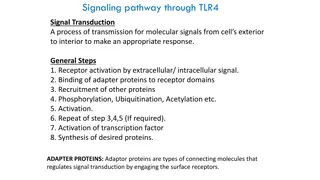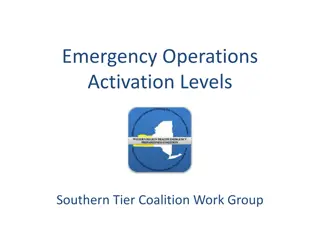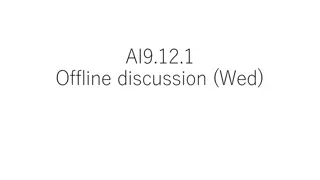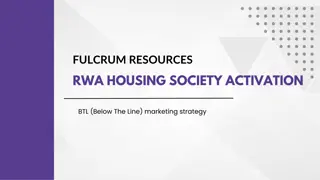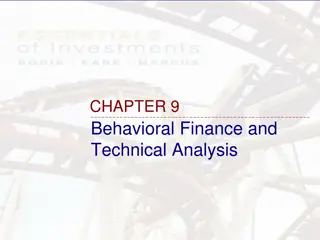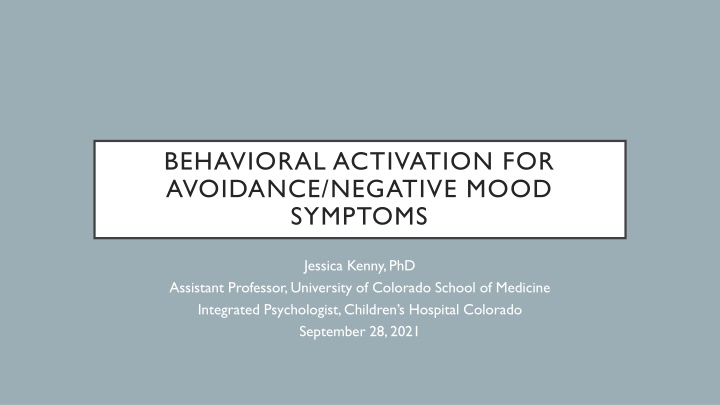
Behavioral Activation for Mood Symptoms
Learn about Behavioral Activation as a strategy to address avoidance and negative mood symptoms in children and adolescents. Explore how it can be applied in medical practice, its effectiveness, and practical case examples.
Download Presentation

Please find below an Image/Link to download the presentation.
The content on the website is provided AS IS for your information and personal use only. It may not be sold, licensed, or shared on other websites without obtaining consent from the author. If you encounter any issues during the download, it is possible that the publisher has removed the file from their server.
You are allowed to download the files provided on this website for personal or commercial use, subject to the condition that they are used lawfully. All files are the property of their respective owners.
The content on the website is provided AS IS for your information and personal use only. It may not be sold, licensed, or shared on other websites without obtaining consent from the author.
E N D
Presentation Transcript
BEHAVIORAL ACTIVATION FOR AVOIDANCE/NEGATIVE MOOD SYMPTOMS Jessica Kenny, PhD Assistant Professor, University of Colorado School of Medicine Integrated Psychologist, Children s Hospital Colorado September 28, 2021
OBJECTIVES Define behavioral activation Identify symptoms that can be addressed by behavioral activation Apply behavioral activation strategies to case examples
BEHAVIORAL ACTIVATION HOW IT FITS INTO YOUR MEDICAL PRACTICE No formal training needed, can be implemented by medical providers Time-limited and adaptable to primary care setting Appropriate and effective for mild anxiety and depressive symptoms in children and adolescents A behavioral health strategy to use with patients 6+ identified through the CARE Process Model who screen positive for in-office support
BEHAVIORAL ACTIVATION - WHAT IS IT? A component of cognitive-behavioral therapy (CBT) An evidence-based behavioral therapy to address mood and anxiety symptoms Basic premise: Action change Emotion change What we do (behaviors) influences how we feel and what we think Acting opposite (of anxiety or depression symptoms) makes us feel better
BEHAVIORAL ACTIVATION WHY DOES IT WORK? Negative mood and avoidance often keep us from doing things that bring enjoyment to our life and starts a vicious cycle Acting opposite combats these vicious cycles Builds an upward spiral of motivation, energy, positive mood, mastery, and social connection Time-limited, better treatment adherence, adaptable to primary care setting
BEHAVIORAL ACTIVATION IN PRACTICE Jennifer 13-year-old Hispanic female in 8thgrade (currently in-person) Online learning all 7thgrade due to COVID, soccer and volleyball cancelled for now due to coaches with COVID Lives with mom (works full-time), parents in the process of separating, one older sister, two younger brothers Complaints of stomachaches and headaches, misses at least 1 day/week of school and starting to fall behind with grades Screener results: sub-clinical anxiety and depression symptoms History of trauma with paternal uncle, no longer has contact Mom says she is depressed and only listens to sad music in room, Jennifer says she s fine just doesn t feel like doing anything because we can t with COVID anyways
BEHAVIORAL ACTIVATION WHERE TO START Discussion of daily activities, goals/values, personal motivators What are you avoiding right now because of your anxiety? What did you used to do that was fun that is no longer fun? If you felt better, what do you think you would be doing right now? How much time are you spending alone in your room right now? Who do you talk to during the day at school/home? How do you want others to know you/think about you? Common places to start with adolescents: limiting time in room at night, nightly check-ins with parents, dinner with family every night, ordering own food, attending classes, going outside with siblings, going for a walk with parents, saying yes to spending time with friends, showering and getting dressed everyday DESPITE not feeling like it.
BEHAVIORAL ACTIVATION FAMILY/CULTURAL CONSIDERATIONS
BEHAVIORAL ACTIVATION FAMILY/CULTURAL CONSIDERATIONS Family and caregiver understanding of mental health symptoms Caregiver involvement, support, and awareness of need to not accommodate Safety, parental capacity, language and acculturation differences, problem solving regarding barriers need to be taken into consideration regarding recommendations Remember achievable goals & change doesn t happen overnight!
REFERENCES McCauley, E., Schloredt, K. A., Gudmundsen, G. R., Martell, C. R., & Dimidjian, S. (2016).Behavioral activation with adolescents: A clinician s guide. Guilford Publications. https://div12.org/treatment/behavioral-activation-for-depression/ https://medicine.umich.edu/sites/default/files/content/downloads/Behavioral- Activation-for-Depression.pdf https://www.therapistaid.com/therapy-guide/behavioral-activation-guide https://www.nimh.nih.gov/news/media/2018/behavioral-activation-treatment-of- adolescent-depression



